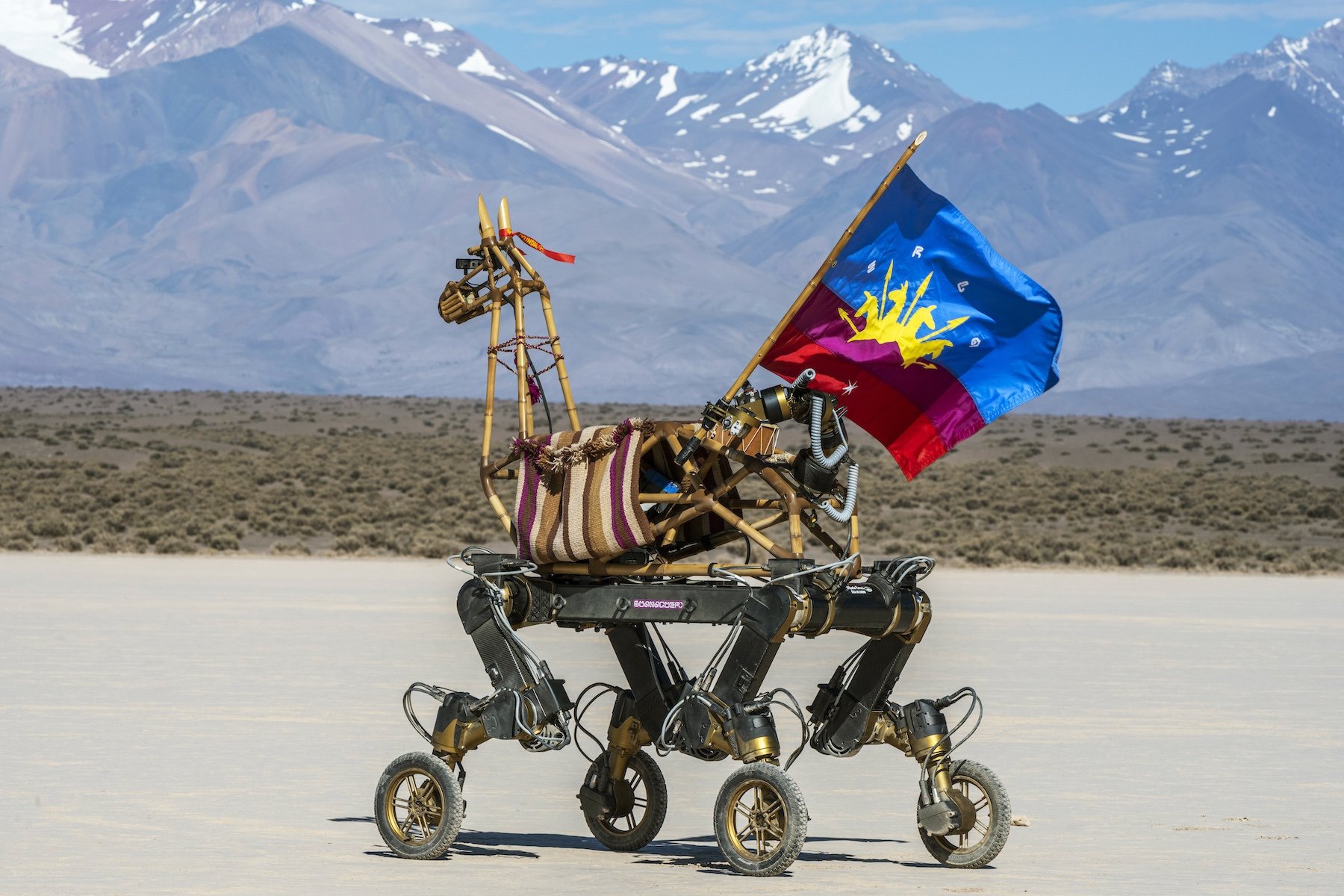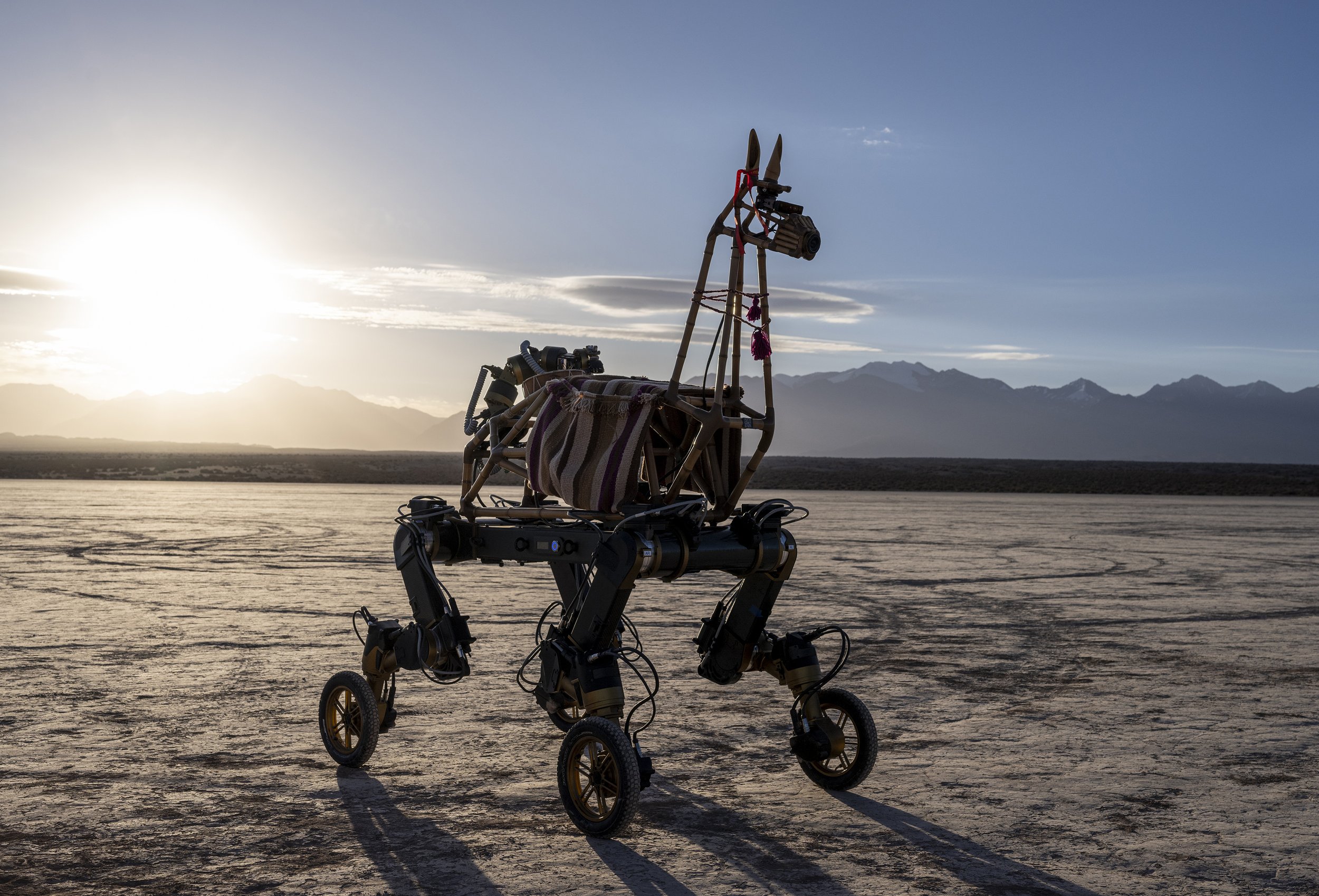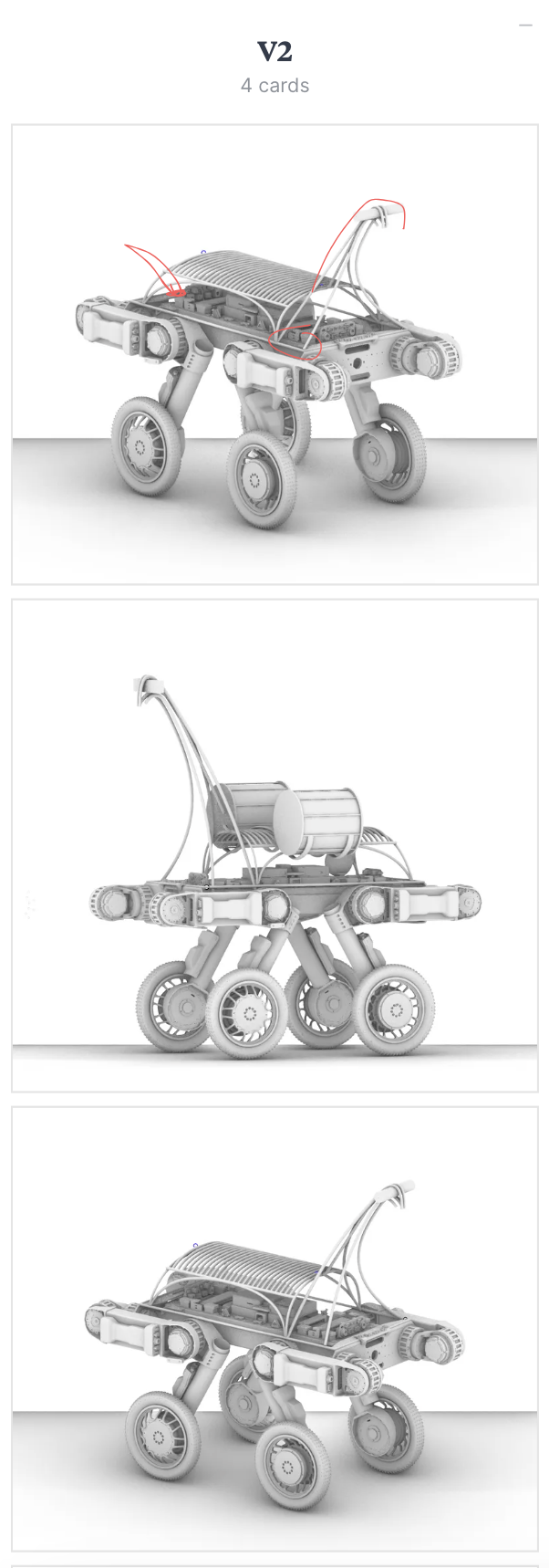
HYUNDAI & RISD ROBOTICS
2022-2023
GUANAQUERX
Hyundai Motor Group New Horizons Studio / Rhode Island School of Design
Assistant Designer
FEB 2023 - APR 2023. REMOTELY ARGENTINA BASED PROJECT
In spring of 2023, I worked with RISD professor Paula Gaetano-Adi on the Guanaquerx project partnered between Hyundai’s New Horizon Studio and RISD.
Paula’s practice “calls for a new technical imagination that radically attends to the world-making capacity of both technology and the arts.” Her interdisciplinary work lies in between robotics, sculpture, and performance.
On this project, she attends to the defuturing affects of robotics and deploys her own methodology to create a robot carrying the revolutionary messages of decolonization through the Andes Mountains.
Project Lead
Paula Gaetano Adi
Year
FEB-APR 2023







Iterative bamboo design mounting to the robotic chassis of New Horizons Studio. Covering will be crafted by indigenous artisans of Argentina.
3D modeled the attachment devices. These are mounted to monitor weather, capture video, provide internet to indigenous communities, and play sound.








POD
Hyundai Motor Group New Horizons Studio / Rhode Island School of Design
Design Researcher
FEB 2023 - APR 2023. REMOTELY ARGENTINA BASED PROJECT
In spring of 2022, I had the opportunity to join the Hyundai Research collaborative with RISD professor Paula Gaetano-Adi-“Designing robotics for the pluriverse”. Our research aimed to challenge the western principles of “progress” in the tech industry by highlighting the defuturing process behind robotics in the military, ai, workforce, agriculture, and entertainment industries.
The pluriverse refers to the idea that there are multiple, diverse worldviews, ontologies, and cosmologies held by different cultures and societies. These are actually crucial mindsets in building robots that foster postive relationships with humans and the diverse life on earth.
My research culminated in a seed dispersal robot proposal that would be deployed after the devestating effects of Ponderosa Pine wildfires.
Project Lead
Paula Gaetano Adi
Year
FEB-APR 2023
Overview
This project stemmed from Sharon M. Hood’s lecture on the tree mortality in fire ecosystems and the changing landscape of forest succession under changing fire regimes.
Reducing fire frequency in fire-dependent ecosystems has had many impacts on forest health. One consequence of the build up of fuel in these ecosystems has been severe forest fires in which the rate of tree mortality is higher. This can mean it takes longer for the forest to recover with natural succession.
Ecosystems maintained with controlled burning have a greater likelihood to recover from natural fires.
The prototype on the left is one means of randomizing the dispersal of seeds after these events. I developed this model with linear actuators and arduino code.











